How to Build a Capsule Wardrobe: 7 Expert Tips

Ever counted how many pieces of unworn clothing you have? The average person uses just 20% of their wardrobe regularly, while the rest collects dust and guilt. Yep, I’ve been there too.
Building a capsule wardrobe isn’t just another minimalist trend—it’s a practical solution to the “I have nothing to wear” syndrome that plagues most of us each morning.
With these 7 expert tips, you’ll learn how to create a functional capsule wardrobe that works for your lifestyle, not against it. One where every piece earns its spot and pairs effortlessly with the rest.
But before we dive into the how-to, let me ask you this: what if the secret to looking put-together isn’t about having more options, but about having the right ones, which also helps reduce fashion waste.
Understanding the Capsule Wardrobe Concept
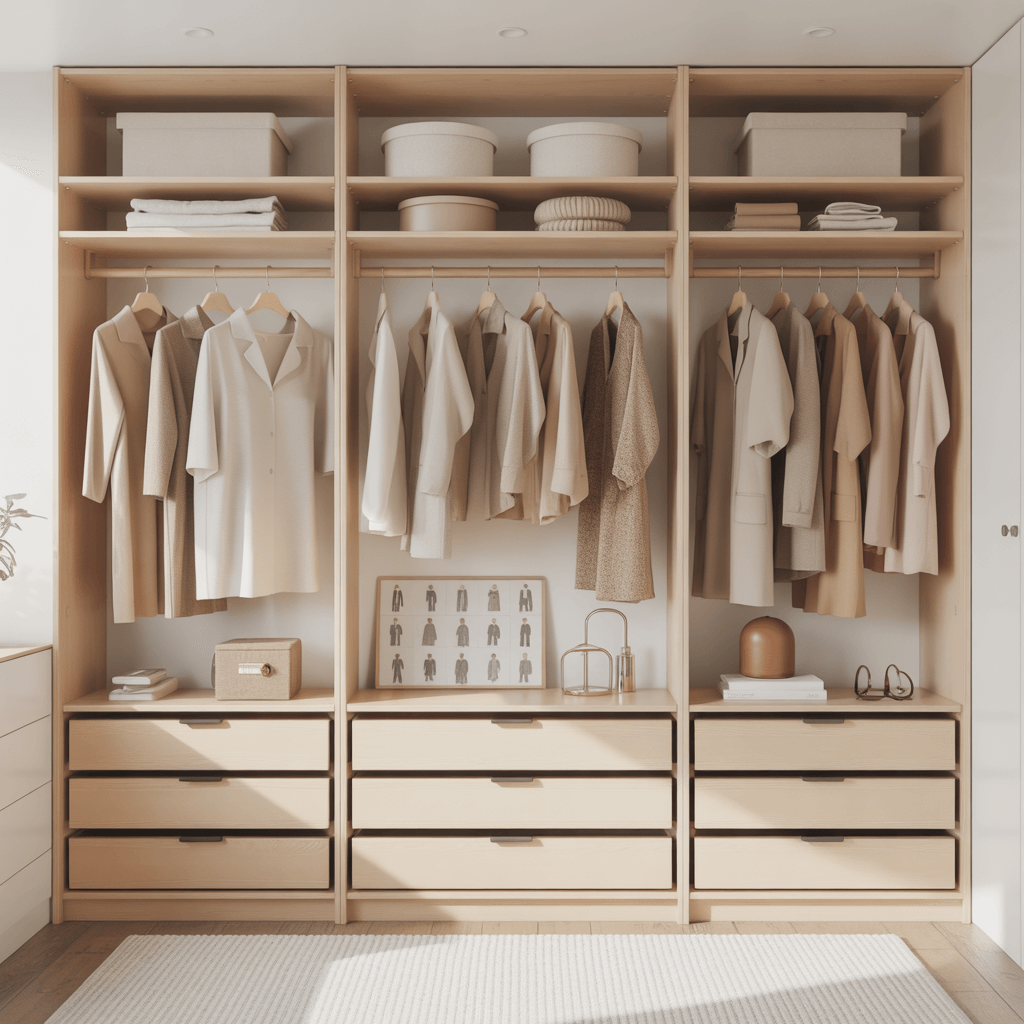
Definition and core principles
Ever heard someone say they have “nothing to wear” while staring at a packed closet? That’s exactly what a capsule wardrobe solves.
A capsule wardrobe isn’t complicated—it’s simply a collection of 30-40 essential items that work together perfectly. Think versatile pieces you actually love wearing, not just clothes that seemed cute in the store but never make it out of your closet.
The core idea? Quality trumps quantity. Every single piece pulls its weight by mixing and matching with everything else. No one-hit wonders allowed.
The principles are pretty straightforward:
- Choose timeless over trendy
- Pick items that coordinate effortlessly
- Focus on fabrics that last
- Select pieces that truly fit your body and lifestyle
Benefits for your lifestyle and budget
The magic happens when you actually implement this approach. First off, you’ll save serious time each morning. No more decision fatigue or trying on seven outfits before work.
Your wallet will thank you too. Instead of dropping cash on random purchases that don’t work together, you’ll invest in fewer, better pieces that actually last.
And can we talk about stress reduction? Opening your closet becomes a pleasure rather than a panic-inducing experience.
Some real benefits people don’t talk about enough:
- You’ll develop a signature style that people remember
- Packing for trips becomes ridiculously easy
- You’ll stop wasting money on “sale” items you never wear
- Your environmental footprint shrinks dramatically
How it differs from minimalism
Minimalism and capsule wardrobes get mixed up all the time, but they’re not identical twins.
Minimalism is a broader lifestyle philosophy about owning less across all categories. A capsule wardrobe? It’s specifically about clothes and doesn’t necessarily mean owning the absolute minimum.
You can have a capsule wardrobe without being a minimalist in other areas of life. Maybe your bookshelf is overflowing or your kitchen gadget collection is impressive—that’s totally fine!
The capsule approach is about intentionality with clothes, not deprivation. You’re not aiming for the fewest possible items—you’re curating a collection that works perfectly for your actual life.
Unlike strict minimalism, capsule wardrobes can still embrace color, pattern and personality. It’s about removing what doesn’t serve you, not stripping away what brings you joy.
Assessing Your Current Wardrobe
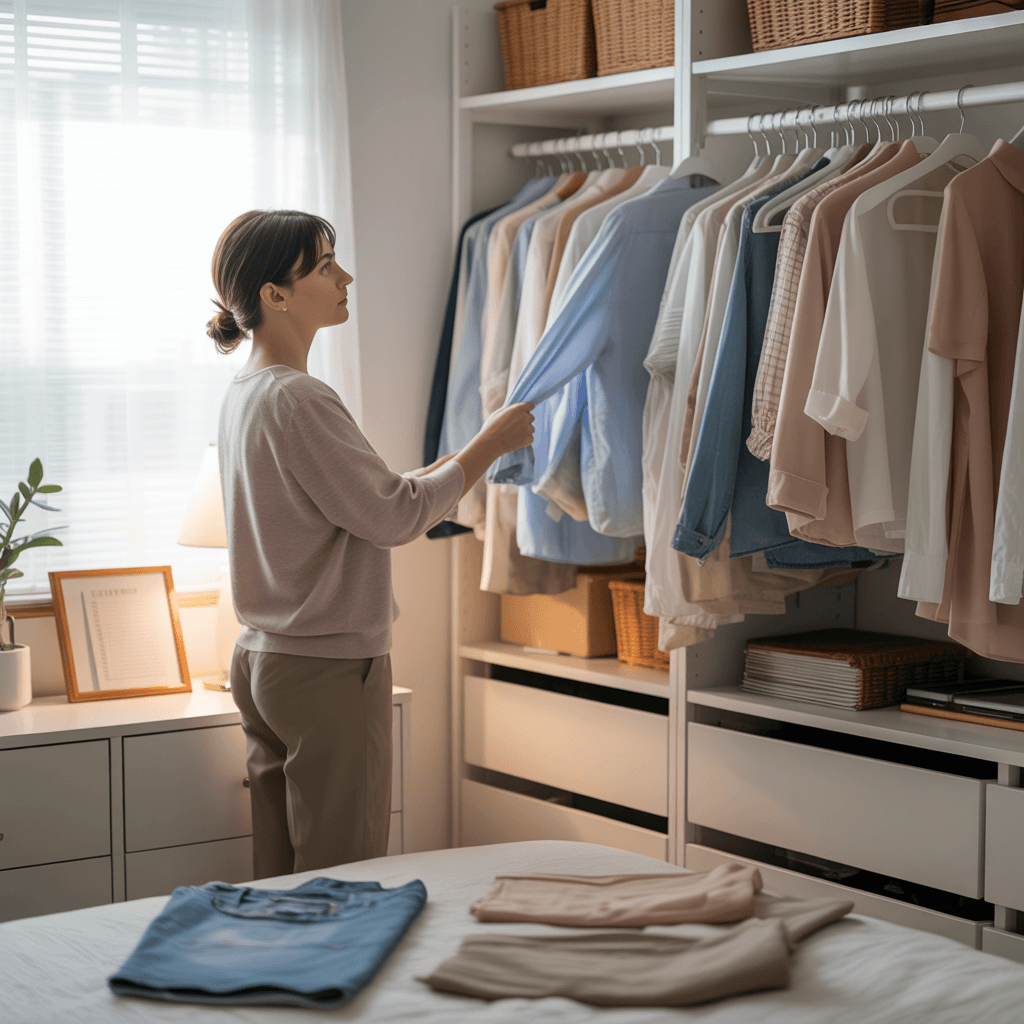
Conducting a thorough closet audit
Ready for the truth? Most of us wear about 20% of our clothes 80% of the time. Crazy, right?
To start your capsule wardrobe journey, you need to get everything out. And I mean everything. Empty your closet, drawers, that secret stash under your bed—all of it.
Sort your clothes into three piles:
- “Heck yes” (items you love and wear regularly)
- “Maybe” (pieces you’re unsure about)
- “Nope” (things you don’t wear or don’t fit)
Be ruthless. That dress with the tag still on from three years ago? It’s telling you something.
Identifying your personal style
Your personal style isn’t what’s trending on Instagram. It’s what you actually reach for when you’re running late and need to feel good.
Look at your “heck yes” pile. Notice any patterns? Maybe you gravitate toward neutral colors, specific silhouettes, or certain fabrics.
Pro tip: Create a quick Pinterest board with outfits you love. After pinning 20-30 looks, step back and spot the common threads. This visual exercise reveals your authentic style faster than any quiz.
Recognizing what pieces you actually wear
Time for some detective work. Ask yourself:
- Which items do I grab first after laundry day?
- What do I pack for trips when I’m limited on space?
- Which pieces make me feel like myself?
Your most-worn clothes aren’t lying to you—they’re showing you what works for your real life, not your fantasy life.
Determining what to keep, donate, or sell
For each item, answer these questions:
- Have I worn this in the last year?
- Does it fit my body right now?
- Does it match at least three other items I own?
- Would I buy this again today?
If you answered “no” to more than one question, it’s time to let go.
Remember—keeping clothes that don’t serve you creates both physical and mental clutter. That vintage jacket you’re “saving for the right occasion” is taking up space that could be filled with something you’ll actually wear.
Choosing a Color Palette
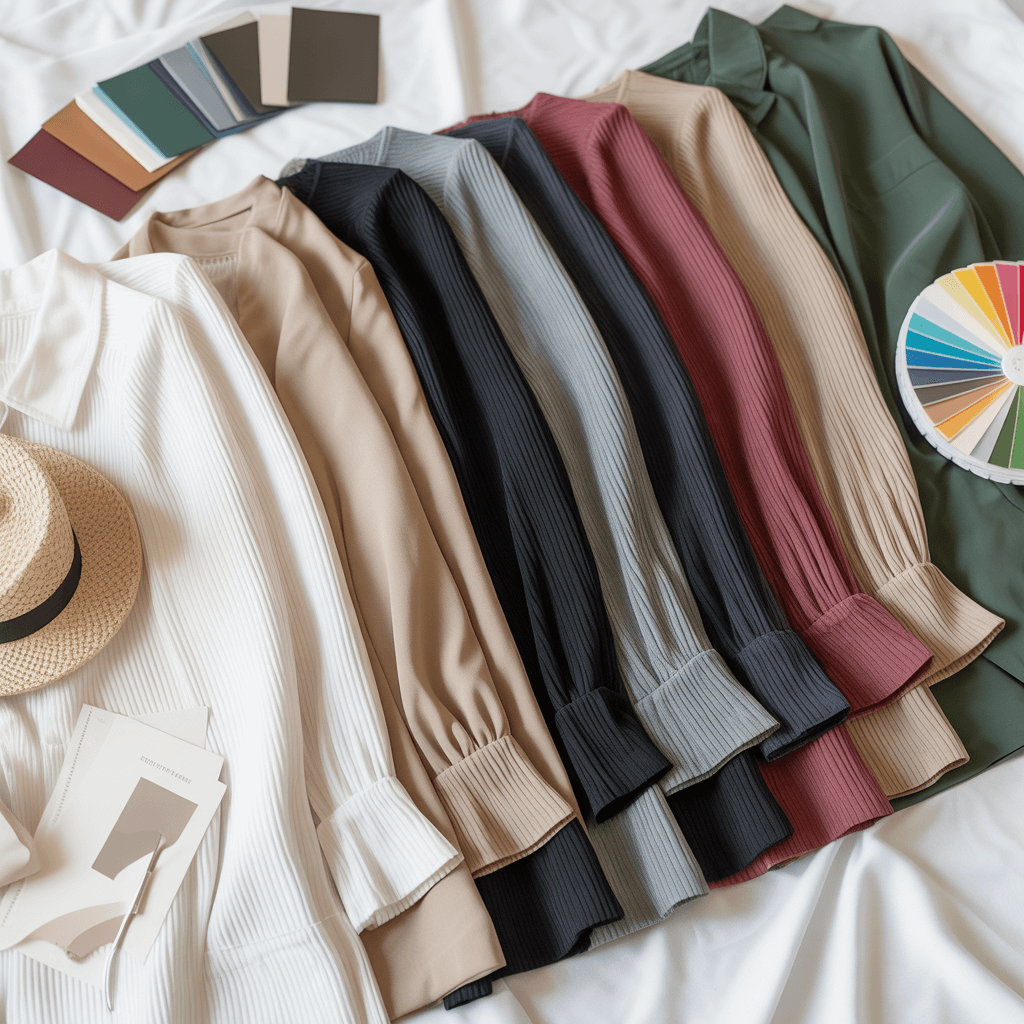
Selecting versatile base colors
Your capsule wardrobe needs a solid foundation, and that starts with your base colors. These aren’t just any colors—they’re the workhorses that’ll do 80% of the heavy lifting in your closet.
Most fashion experts swear by neutrals: black, white, navy, gray, and beige. Pick 2-3 that look amazing on you and complement your skin tone. Don’t just blindly follow trends here—that navy that looks stunning on your friend might wash you out completely.
Here’s a quick breakdown of what each neutral brings to the table:
| Base Color | Why It Works |
|---|---|
| Black | Slimming, sophisticated, hides stains |
| Navy | Softer than black, works for all seasons |
| Gray | Extremely versatile, pairs with everything |
| White/Cream | Brightens other pieces, looks crisp |
| Beige/Camel | Elevated, timeless, works with most colors |
The real magic happens when you’re standing in your closet at 7 AM and everything goes with everything else. That’s the power of thoughtful base colors.
Adding complementary accent colors
Nobody wants a wardrobe that’s boring as watching paint dry. This is where accent colors come in.
Pick 1-3 accent colors that make you happy and complement your base palette. Maybe it’s burgundy, forest green, or mustard yellow. Whatever makes your heart sing.
The trick? These accent colors should play nice with ALL your base colors. That burgundy blouse should look just as good with your navy pants as it does with your beige skirt.
And don’t forget your personal coloring—your hair, eyes, and skin tone. Some colors will make you look radiant while others… not so much.
Ensuring all pieces mix and match effortlessly
The ultimate test of a well-planned color palette is the mix-and-match factor.
Every top should work with every bottom. Every layer should complement what’s underneath. Do the math—10 well-chosen pieces can create 50+ different outfits when they all work together.
A quick hack? Lay everything out on your bed and play mix-and-match. If something only works with one other item, it’s probably not earning its keep in your capsule.
Another pro tip? Take photos of winning combinations when you find them. On rushed mornings, you’ll thank yourself for this cheat sheet of pre-approved outfits.
Remember—a true capsule wardrobe isn’t about limitation. It’s about freedom from decision fatigue and the confidence of knowing everything in your closet serves a purpose.
Investing in Quality Foundation Pieces
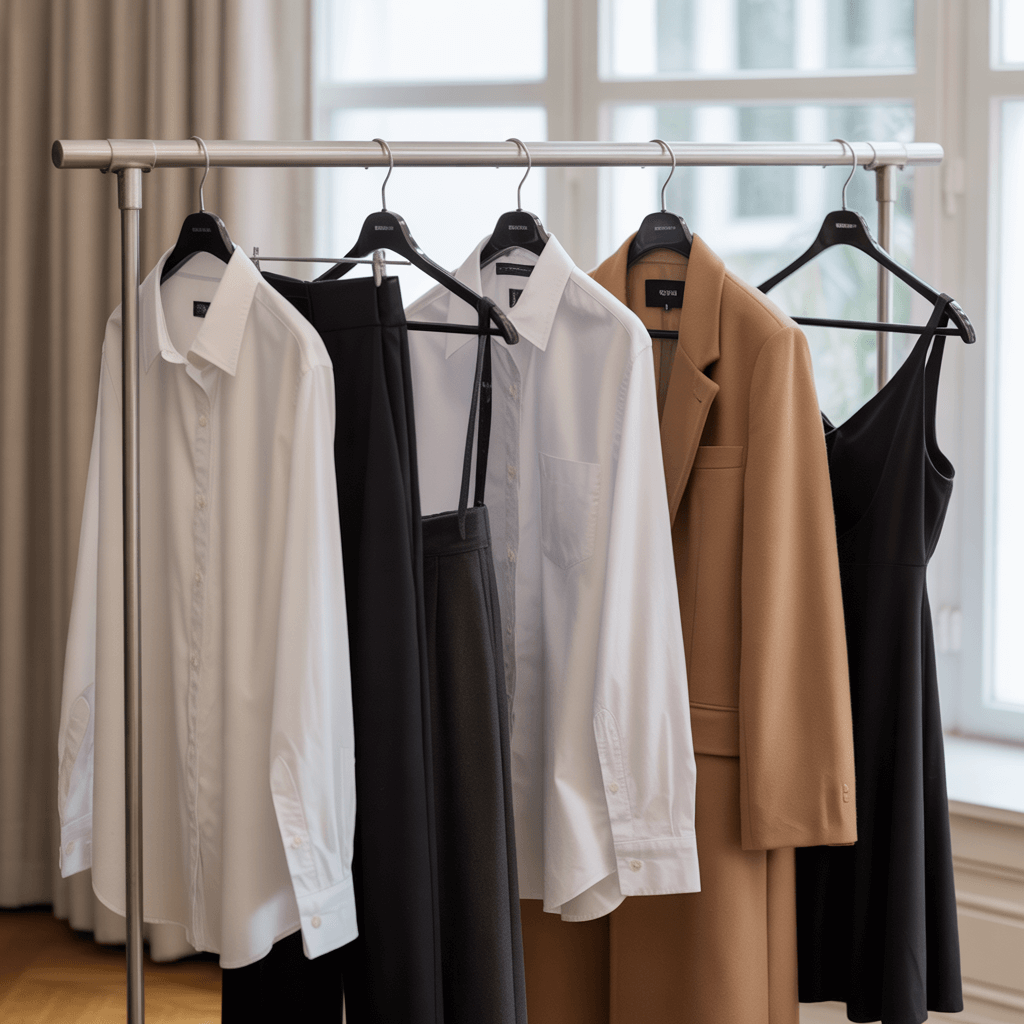
Essential tops that pair with everything
Quality tops are the workhorses of your capsule wardrobe. Think white button-downs that look just as good with jeans as they do under a blazer. A crisp white tee that doesn’t lose its shape after three washes. A black turtleneck that transitions from office to dinner without missing a beat.
The trick? Fabric matters more than brand name. A $30 cotton-silk blend will outlast a $15 pure polyester piece every time. And you’ll actually want to wear it.
Look for:
- Neutral colors (white, black, navy, cream)
- Simple necklines that flatter your shape
- Natural fibers or quality blends
- Minimal embellishments or trendy details
Versatile bottoms for multiple occasions
The right pair of pants can take you from Monday meetings to Sunday brunch without a hitch. Dark wash jeans without distressing will be your best friend here.
A well-tailored black pant deserves the investment—try them on, walk around, sit down. Do they bag at the knees? Pass. A midi skirt in a neutral shade works year-round with tights or bare legs.
When shopping for bottoms, the fit test is everything. If they don’t feel amazing in the dressing room, they definitely won’t when you’re wearing them all day.
Durable outerwear that withstands trends
A quality coat or jacket might hurt your wallet initially, but break down the cost-per-wear and it’s practically free.
A classic trench coat hasn’t gone out of style since the 1940s, and it’s not about to start now. A well-structured blazer transforms jeans and a tee into an outfit worth noticing. A simple black leather jacket gets better every year you own it.
Look for timeless silhouettes, proper lining, and sturdy hardware. Pockets should be functional, not decorative afterthoughts.
Classic footwear options
Shoes make or break your capsule wardrobe. The right pair carries you through countless outfits without screaming for attention.
White sneakers work with literally everything. A comfortable black flat takes you from office to errands. Chelsea boots transition through three seasons without complaint.
Comfort isn’t optional—it’s mandatory. Beautiful shoes that hurt your feet will sit unworn, and that’s the opposite of a capsule wardrobe philosophy.
Quality shoes have leather (or good vegan alternatives) that mold to your feet, supportive soles, and construction that can be repaired rather than tossed when worn down. The initial investment pays dividends in comfort and longevity.
Strategic Shopping for Maximum Versatility
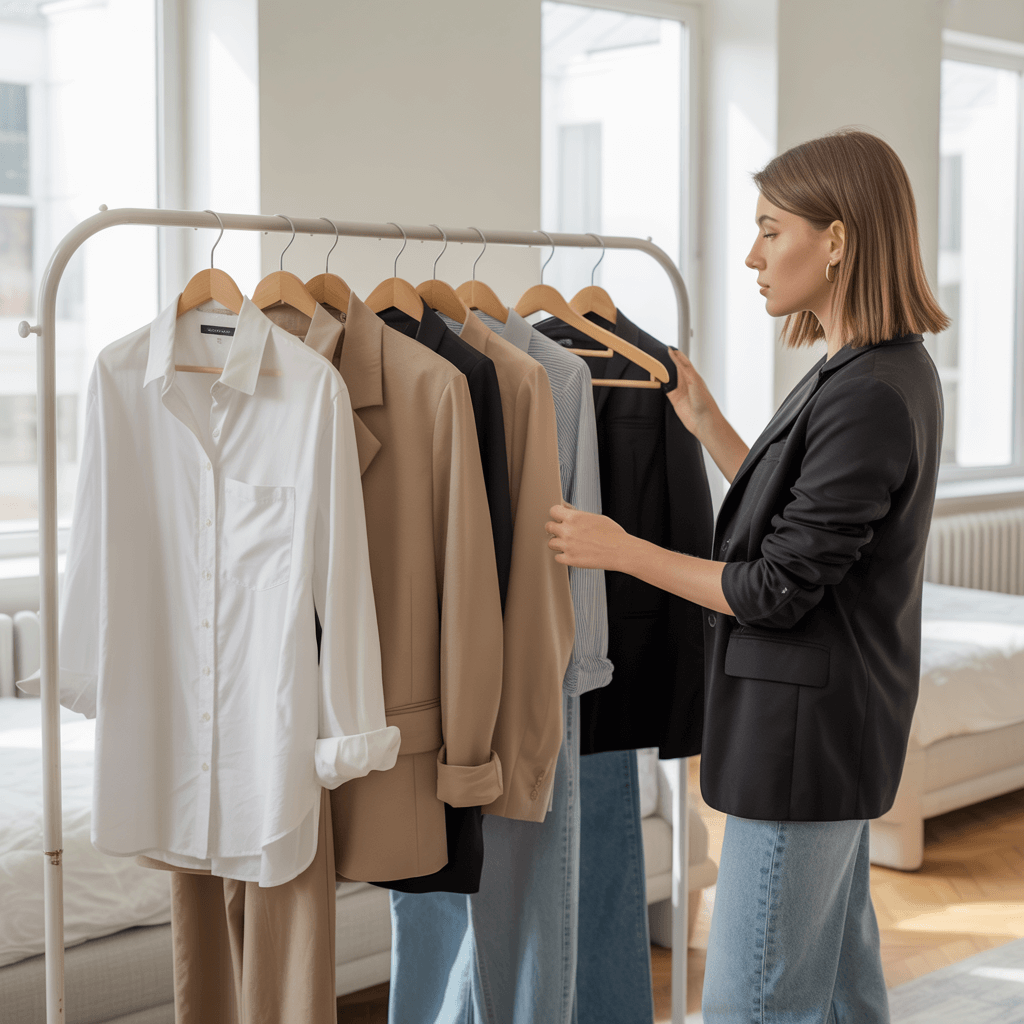
Creating a prioritized shopping list
Ever thrown money at random fashion pieces only to find them collecting dust? Been there. Shopping for your capsule wardrobe isn’t about grabbing whatever catches your eye—it’s about strategy.
Start by taking inventory of what you already own and love. Then identify the gaps. Need a versatile blazer? Quality jeans? Write it down.
Rank your list by:
- Versatility (how many outfits can you create with it?)
- Current wardrobe gaps (what’s missing that’s causing outfit headaches?)
- Seasonality (prioritize year-round pieces first)
Got $200 to spend? Better to invest in that perfect white button-down you’ll wear weekly than three trendy tops you’ll wear twice.
Focusing on fit and fabric quality
The cold truth? A $30 perfectly-fitted tee looks better than an ill-fitting $200 one. Always.
When shopping, ignore the size label and focus on how it actually fits YOUR body. Remember:
- Shoulders should align at your shoulder edge
- Sleeves shouldn’t restrict movement
- Nothing should pull or gap
Fabric quality is your secret weapon. Flip garments inside out to check seams and construction. Natural fibers like cotton, wool, and linen typically last longer and wear better than synthetics.
Avoiding impulse purchases
Shopping triggered by emotions is the enemy of your capsule wardrobe. That sequined jacket might give you a dopamine hit now, but will you actually wear it?
Try the 24-hour rule: leave the store, sleep on it, then decide tomorrow. If you’re still dreaming about it, it might be worth adding.
Before any purchase ask yourself:
- Does this work with at least three items I already own?
- Would I buy this if it weren’t on sale?
- Does this align with my personal style, not just current trends?
Smart shopping isn’t boring—it’s liberating. You’ll build a wardrobe where everything works together and nothing feels like a waste.
Seasonal Transitions Made Simple
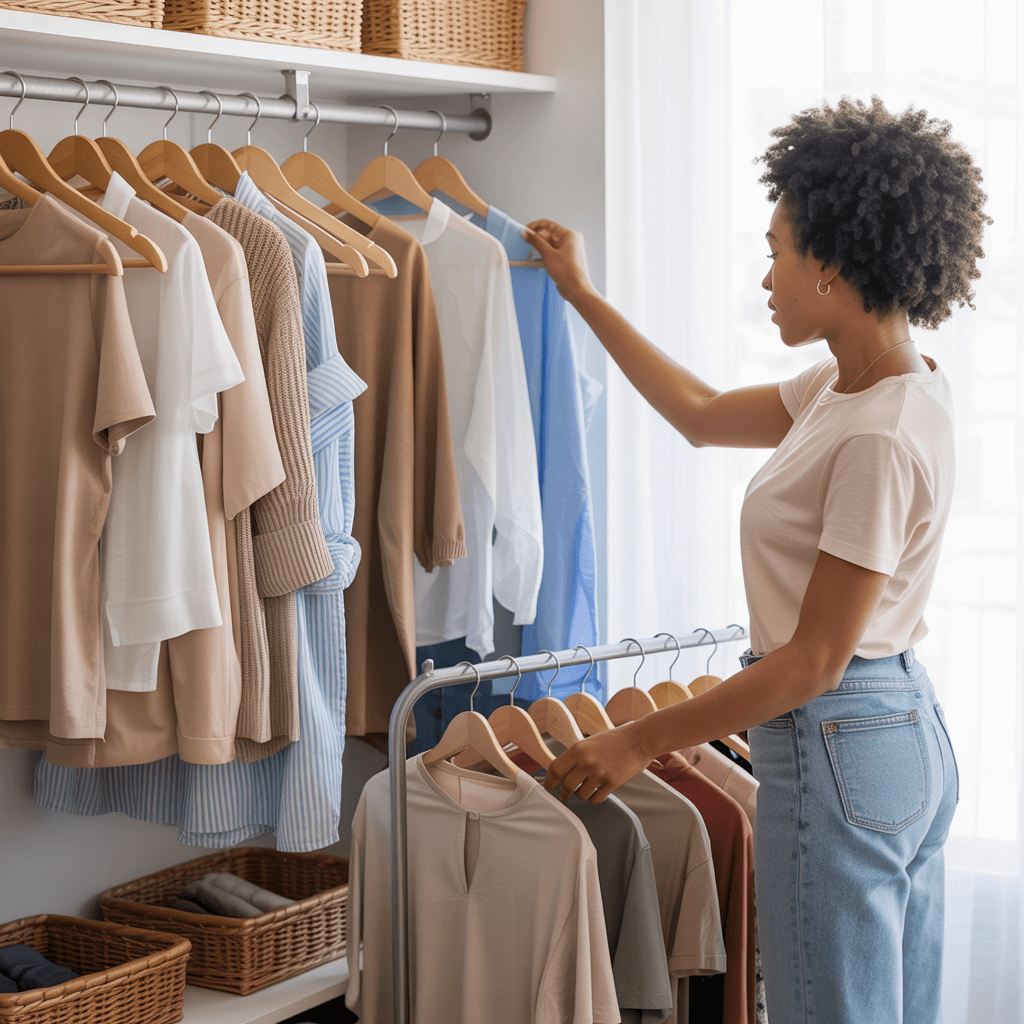
Core pieces that work year-round
Seasonal dressing doesn’t have to be complicated. The secret? Having strong core pieces that pull their weight all year long.
What makes something a year-round winner? Look for medium-weight fabrics that aren’t too heavy or too light. A good merino wool sweater works in winter over a turtleneck and in summer over a tank with shorts.
Your best bets include:
- White button-down shirts
- Straight-leg jeans in a mid-wash
- Neutral blazers
- Midi skirts
- Classic t-shirts in black, white, and gray
These pieces act like the glue holding your seasonal items together. They’re the constants while everything else rotates.
And here’s what most people miss: year-round pieces should be your investment pieces. That $200 you’d spend on three trendy tops? Put it toward one excellent blazer instead.
Adding and rotating seasonal items
Think of seasonal items as guests at your wardrobe party – they come, they shine, they leave.
The trick is being ruthless about what stays and what goes. Each season, pull out storage bins and assess what still works before shopping.
Seasonal rotation at its simplest:
- Spring: Add lightweight cotton, linen pieces
- Summer: Rotate in shorts, sundresses
- Fall: Bring back light layers, ankle boots
- Winter: Swap in heavier knits, coats
Don’t go overboard. Limit yourself to 5-7 seasonal additions each quarter. When winter rolls around, those summer shorts go into storage, not taking up valuable closet real estate.
The real game-changer? A one-in-one-out policy. For every seasonal piece you add, something else needs to hibernate.
Layering techniques for extended wear
Layering isn’t just for staying warm—it’s the secret weapon for stretching your capsule wardrobe across seasons.
The three-layer rule works magic:
- Base layer (against skin)
- Mid layer (insulation)
- Outer layer (protection)
That summer dress? In winter, layer it over a turtleneck with tights. Your favorite fall blazer works in spring over a t-shirt instead of a sweater.
Smart layering means thinking beyond the obvious. A button-down doesn’t just go under sweaters—try it open over a dress as a light jacket. Slip a fitted turtleneck under absolutely everything.
Temperature dropping unexpectedly? Add thin layers rather than bulky ones. They trap heat better and don’t make you look like a marshmallow.
The most versatile layering pieces:
- Tissue-thin turtlenecks
- Unstructured cardigans
- Lightweight scarves
- Sleeveless shells
Storage solutions for off-season items
Out of sight shouldn’t mean damaged goods. Proper storage makes the difference between “like new” and “what happened?”
Skip those giant vacuum bags—they crush natural fibers and leave creases that never come out. Instead, opt for breathable cotton storage bins with cedar blocks to keep moths away.
The biggest storage mistake? Thinking everything needs the same treatment. Different materials need different care:
- Cashmere/wool: Clean before storing, fold with tissue paper, add cedar
- Silk/delicates: Hang on padded hangers in breathable garment bags
- Cotton/linens: Fold loosely, no heavy items on top
- Leather/suede: Condition before storing, stuff with paper to maintain shape
Label everything clearly by season and type. Nothing’s worse than digging through six bins looking for that one perfect sweater.
And always, always keep a small section of off-season items accessible—those random warm days in February or cool nights in August happen more than you think.
Maintaining Your Capsule Wardrobe
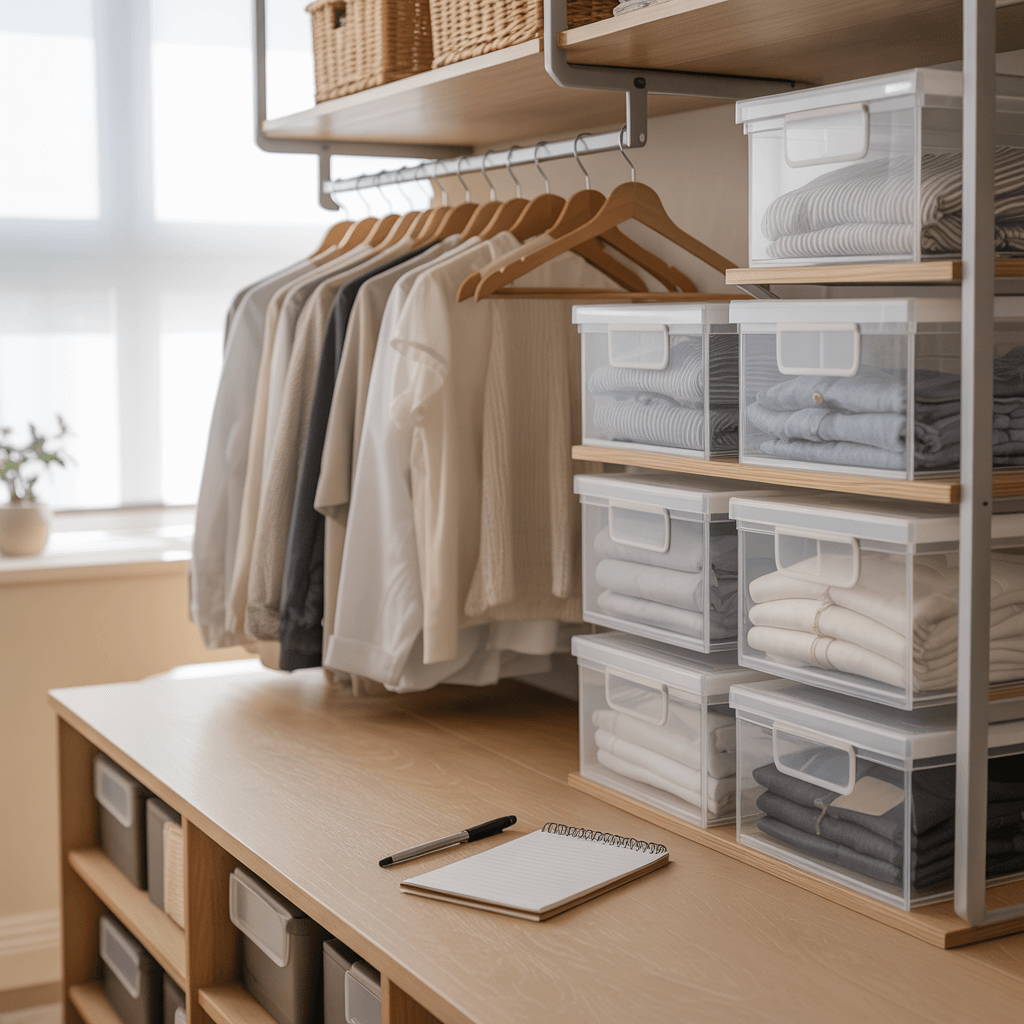
Regular reassessment schedule
Building a capsule wardrobe is just the beginning. The real magic happens when you maintain it properly. Set aside time every three months to evaluate what’s working and what’s not.
Think of it as a quarterly check-in with your closet. Pull everything out, try things on, and be brutally honest with yourself. That blouse you haven’t touched in six months? It’s probably time to let it go.
Many successful capsule wardrobe enthusiasts use the “one in, one out” rule. It’s simple – whenever something new comes in, something old must go. This keeps your numbers in check without much effort.
Replacing worn items strategically
Quality pieces eventually wear out – that’s just life. But don’t panic-buy replacements.
Keep a running list of items that are showing signs of wear. This gives you time to research and find the perfect replacement rather than impulse-buying something that doesn’t quite fit your needs.
When something needs replacing, ask yourself:
- Did this item truly earn its place in my wardrobe?
- How often did I actually wear it?
- Could I find something even more versatile to replace it?
Sometimes the answer is to replace it with exactly the same thing (hello, perfect white tee). Other times, it’s an opportunity to refine your style further.
Adding trend pieces without compromising your system
Trends can be fun! The trick is incorporating them mindfully.
Accessories are your best friends here. A trendy scarf, statement earrings, or bold bag can update your classic pieces without overwhelming your carefully curated collection.
If you’re eyeing a trendy clothing item, ask yourself:
- Does it work with at least three other pieces I already own?
- Can I style it multiple ways?
- Will I still like it in six months?
The 80/20 rule works beautifully for capsule wardrobes: 80% timeless essentials, 20% fun seasonal or trend pieces.
Preventing wardrobe bloat over time
Wardrobe bloat happens to the best of us. One day you’re feeling proud of your streamlined closet, the next you’re wondering where all these clothes came from.
The shopping pause is your secret weapon. Before any purchase, institute a 24-hour waiting period. Most impulse buys won’t pass this test.
Another trick: take photos of your perfectly organized capsule wardrobe. When you’re tempted to add something that might throw off your system, look at those photos as a reminder of what you’re working toward.
Remember that a capsule wardrobe isn’t about deprivation—it’s about intention. Every piece should earn its space through versatility, quality, and how much joy it brings you when you wear it.
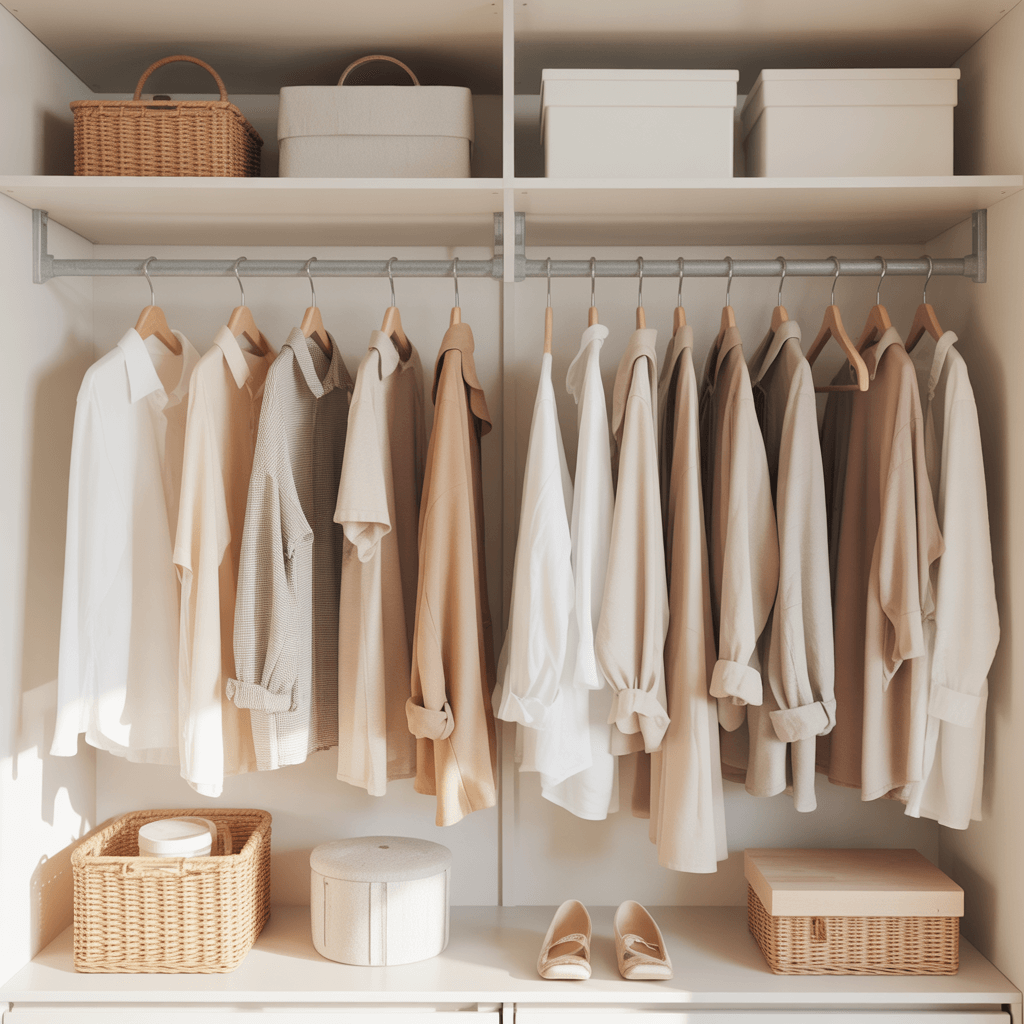
Building a capsule wardrobe transforms your closet and simplifies your daily routine. By understanding the concept, assessing what you already own, selecting a cohesive color palette, and investing in quality foundation pieces, you create a wardrobe that works harder for you. Strategic shopping for versatile items and planning for seasonal transitions ensures your capsule remains functional year-round.
Take the first step today by decluttering your closet and identifying those pieces that truly bring you joy and confidence. Remember, a successful capsule wardrobe isn’t about restriction—it’s about freedom from decision fatigue and creating a personal style that authentically represents you. With these seven expert tips, you’re well-equipped to build a wardrobe that’s efficient, sustainable, and perfectly tailored to your lifestyle.





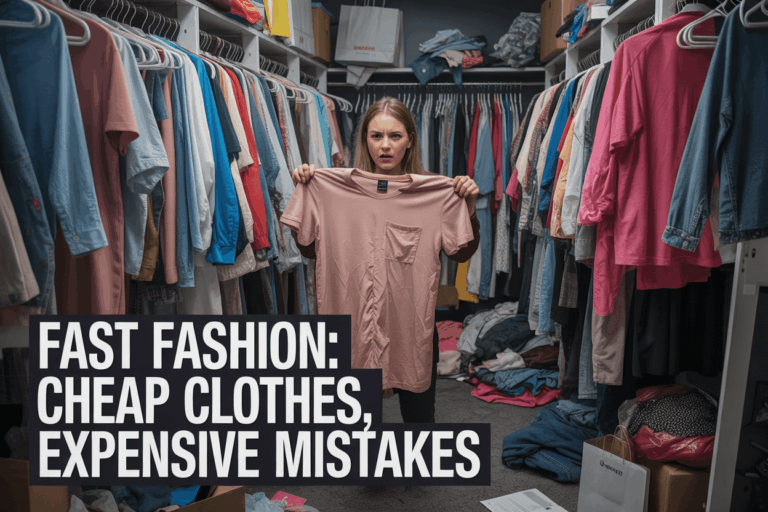

As I web site possessor I believe the content material here is rattling excellent , appreciate it for your efforts. You should keep it up forever! Best of luck.
This is very interesting, You are a very skilled blogger. I’ve joined your feed and look forward to seeking more of your wonderful post. Also, I’ve shared your website in my social networks!
Write more, thats all I have to say. Literally, it seems as though you relied on the video to make your point. You clearly know what youre talking about, why waste your intelligence on just posting videos to your weblog when you could be giving us something informative to read?
There is noticeably a bundle to realize about this. I assume you made various good points in features also.
I visited a lot of website but I think this one holds something special in it in it
My spouse and i got so glad Michael managed to carry out his researching via the precious recommendations he acquired from your web site. It is now and again perplexing to simply choose to be giving out tips and tricks that many some others have been trying to sell. We know we’ve got the website owner to thank because of that. All of the illustrations you’ve made, the straightforward site navigation, the relationships you help to promote – it is all superb, and it is aiding our son in addition to the family imagine that this issue is enjoyable, and that’s particularly important. Many thanks for all the pieces!
Thanks , I’ve just been looking for info approximately this subject for a long time and yours is the greatest I have came upon so far. However, what concerning the conclusion? Are you sure in regards to the supply?